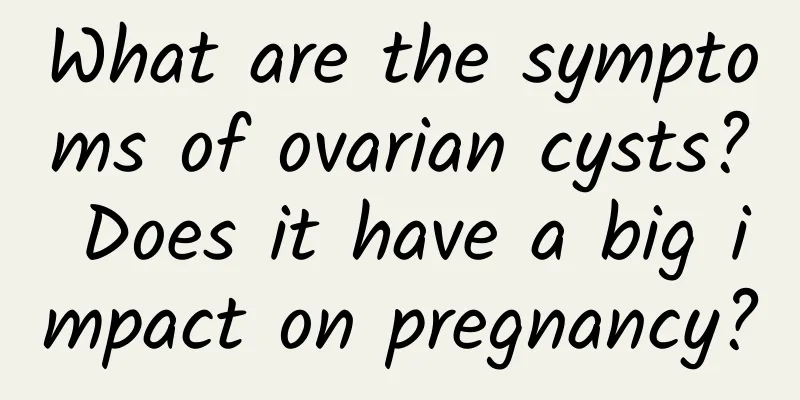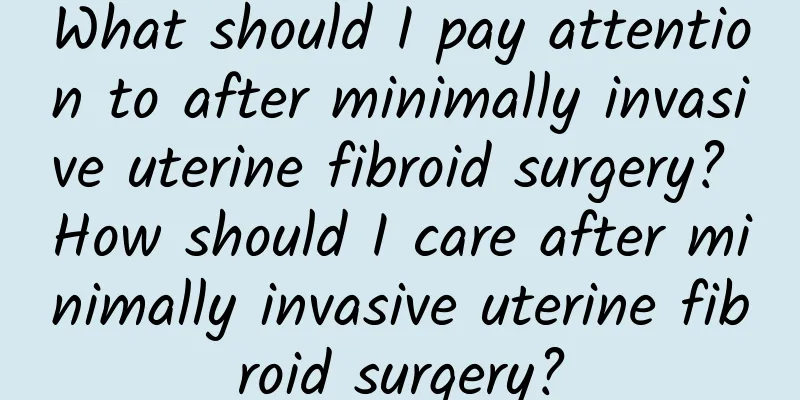Can chronic pelvic peritonitis be cured?

|
Chronic pelvic peritonitis often has chronic salpingo-oophoritis and chronic uterine myositis, so it often has all the symptoms of chronic pelvic genital inflammation. Chronic pelvic peritonitis brings many inconveniences to life and work, so it should be actively treated. So, can chronic pelvic peritonitis be cured? Experts say that if chronic pelvic peritonitis is treated promptly after onset, it is very likely to be cured. Traditional Chinese medicine has a significant effect in treating chronic pelvic peritonitis. The following editor will introduce it to you in detail. When treating this disease with traditional Chinese medicine, we should distinguish between cold, heat, deficiency and excess, and treat it based on syndrome differentiation: (1) Damp-heat descending type: Treat by clearing away heat and removing dampness. Prescription: 10 grams of Phellodendron chinense, 10 grams of Achyranthes bidentata, 12 grams of Poria cocos, 12 grams of Plantago seed (package), 6 grams of Alisma orientalis, 12 grams of Paeonia lactiflora, 10 grams of Moutan bark, 6 grams of Artemisia capillaris, and 10 grams of Atractylodes lancea. If the abdominal pain is obvious, add 10 grams of Yuanhu and 10 grams of Chuanlianzi to promote qi and relieve pain; if the appetite is poor and the stool is loose, replace Atractylodes with stir-fried Atractylodes 10 grams, add 18 grams of Poria and 20 grams of raw Coix seed to strengthen the spleen and eliminate dampness. (2) Blood stasis and heat syndrome: Treat by promoting blood circulation and removing blood stasis, clearing away heat and detoxifying. Prescription: 15 grams of Angelica sinensis, 15 grams of Corydalis yanhusuo, 20 grams of Patrinia chinensis, 15 grams of Rhubarb with wine, 15 grams of Red Peony Root, 12 grams of Cyperus rotundus, and 15 grams of peach kernel, decocted in water and taken orally. If there is obvious stinging pain in the lower abdomen, add 10g of frankincense and 10g of myrrh to dissipate blood stasis and stop bleeding; if there is obvious distension and pain in the lower abdomen, add 10g of Chuanlianzi and 10g of Zhiqiao to promote qi and stop pain; if the menstrual flow is scanty, dark in color and clots, add 20g of Leonurus japonicus to promote blood circulation and dissipate blood stasis. If the leucorrhea is heavy and yellow in color, add 15g of Artemisia capillaris and 12g of Alisma orientalis to clear dampness and heat. (3) Cold-dampness stagnation type: Treat by warming the yang and dispelling cold, activating blood circulation and removing dampness. Prescription: 9 grams of fennel, 6 grams of dried ginger, 12 grams of angelica, 9 grams of Chuanxiong, 9 grams of cinnamon twig, 12 grams of red peony root, 10 grams of myrrh, 10 grams of mugwort, 10 grams of Atractylodes macrocephala, 15 grams of Poria, 10 grams of Zedoaria, and 10 grams of Red Rhizoma. Boil in water and take. If the amount of vaginal discharge is large, white and thin, add 10 grams of nutmeg and 10 grams of ginkgo to warm the kidney and stop the discharge. If the waist pain is obvious, add 10 grams of Eucommia ulmoides and 20 grams of Sichuan chuanxiong to nourish the kidney and strengthen the waist. After taking the above medicine orally, the remaining residue can be put into a cloth bag and applied to the lower abdomen, with hot compress for 20 to 30 minutes each time. Rectal drip of traditional Chinese medicine can achieve good results in treating this disease. Prescription: 20g of red peony root, 20g of red vine, 20g of Patrinia scabra, 20g of Taraxacum mongolicum, 15g of Prunella vulgaris, 20g of Salvia miltiorrhiza Decoction 100 ml of the above solution, drip into the anus, 1-2 times a day, 15 times as a course of treatment. It is used for patients with damp-heat or stasis-heat syndrome. If a lump is formed, add 20 grams of Trillium and 15 grams of Curcuma to remove blood stasis and eliminate accumulation; when there are signs of qi deficiency, add 30 grams of Astragalus to replenish qi and strengthen the spleen; if there is cold pain in the lower abdomen, remove the Patrinia and Taraxacum, and add 10 grams of Asarum and 10 grams of cinnamon twig to warm the meridians and dispel cold. The above is an introduction to the treatment methods of chronic pelvic peritonitis. I hope it will be helpful to you. |
<<: Can women with chronic pelvic peritonitis heal on their own?
>>: Will pelvic peritonitis heal on its own?
Recommend
What to check for abnormal vaginal discharge in women
Women with abnormal vaginal discharge need to und...
Bacterial vaginosis that is prone to recurrence
We all know that we cannot live without bacteria ...
Hyperprolactinemia postoperative diet
The first thing to do in treating hyperprolactine...
Clinical treatment of uterine adenomyoma
Uterine fibroids are common endometrial invasions...
In the early stages of ectopic pregnancy, there is usually lower abdominal pain.
In the early stage of ectopic pregnancy, there is...
What to pay attention to after uterine fibroid surgery
What should I pay attention to in my diet after u...
Age comparison table of women's menopause
The age comparison table of women's menopause...
Myth! Losing weight without carbohydrates
Text/Natsume Saiko (Japanese writer) If you want ...
Enjoy the authentic flavor! Eat this way to burn fat and lose weight easily
Preparing diet food requires blanching or removin...
What should be paid attention to in the treatment of irregular menstruation?
What should I do if I have irregular menstruation...
What medicine is good for women with cervical erosion of degree 2? These methods can also treat cervical erosion of degree 2
The problem of cervical erosion is a big problem ...
Briefly introduce some symptoms of acute pelvic inflammatory disease
There are more and more patients with acute pelvi...
Cervicitis must be prevented early to prevent malignant transformation
Cervicitis is a common disease among women of chi...
Girls who love to eat sour food will not get fat. Can eating sour food help lose weight? Green apples and oranges are good treasures
I heard that girls who like to eat sour food will...
Eating sweets for breakfast can help you lose weight without rebounding
Most women will draw a limit on the amount of swe...









